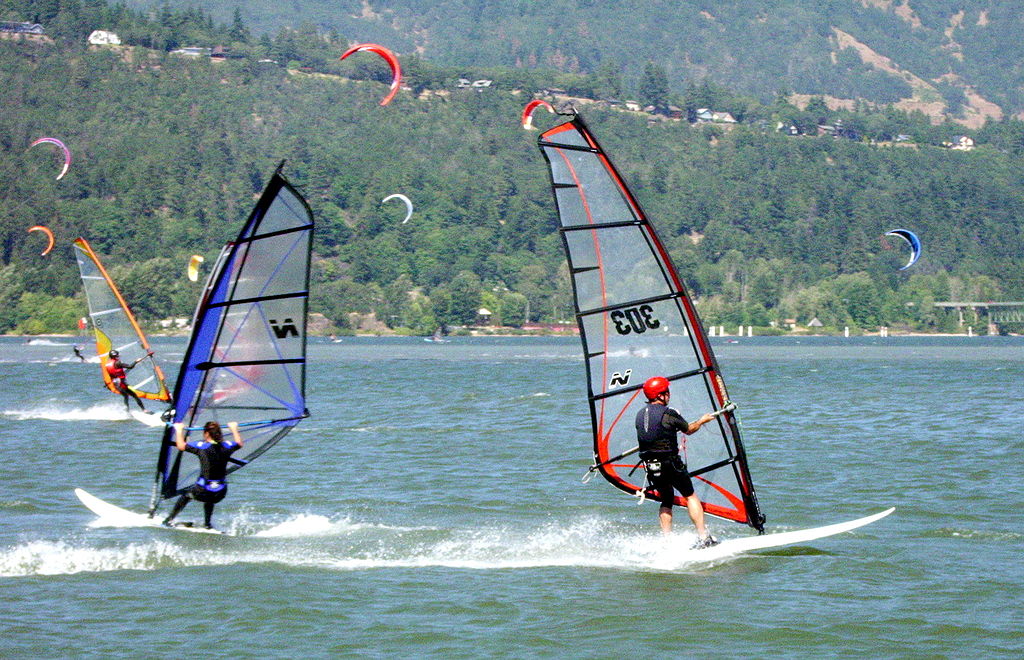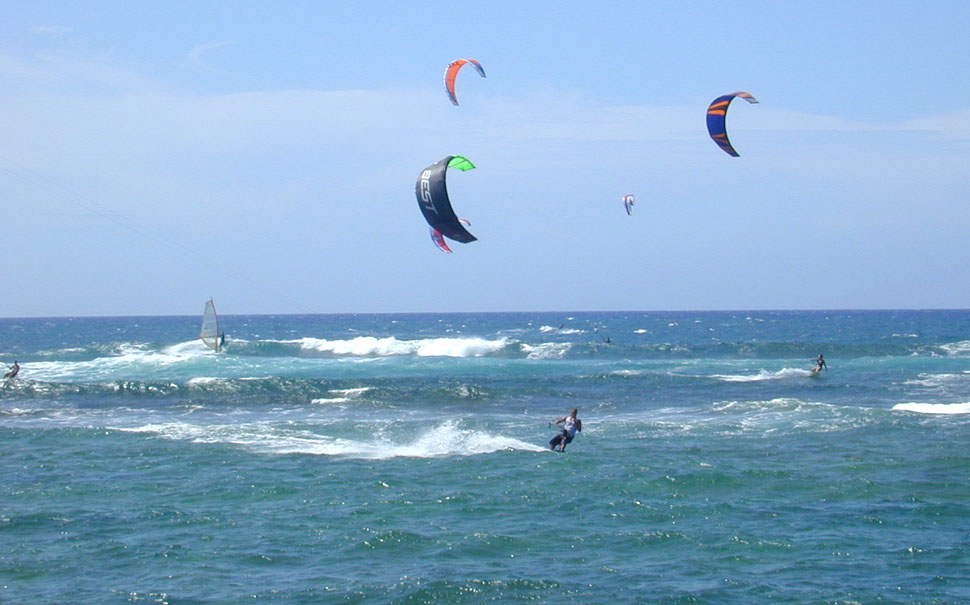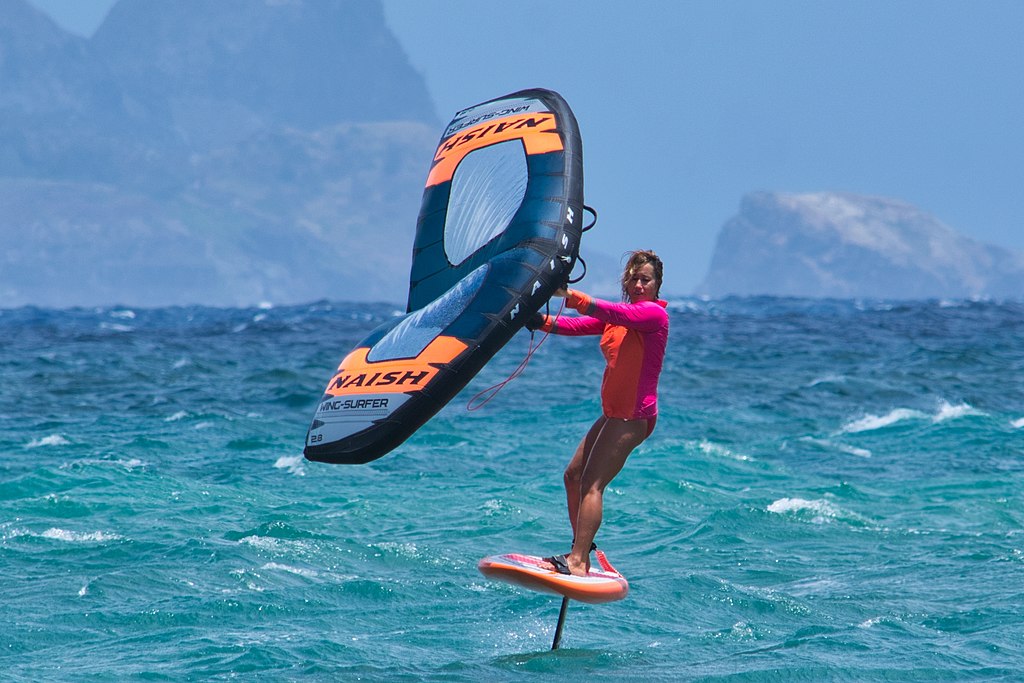If you’ve ever wondered, “What is wing foil surf and is wingfoil the same as windsurf and kite?”, you’re not alone. As water sports continue to gain popularity, it’s natural to want to understand the differences between these exciting activities. While they might seem similar at first glance, each offers a unique experience and they are actually very different sports with different required skill sets. Let’s dive into the specifics.
What is wing foil surf
Wing foil surf is the term many people use when they actually look for the sport called wingfoil or the version called windfoil. In windfoiling, you go windsurfing with a foil, meaning your whole windsurf set comes out of the water. On this page (actually on this whole website), we are all about wingfoil. Wingfoil means you ride on a board with a foil under it, that allows you to lift out of the water when you gain speed. The word “wing” comes from the fact that what you use as a sail is actually a “wing” that is not connected to the board by a mast, nor is it connected to the rider by lines. The wing is a new element in water sports.
Lear more about the wing and how to handle the wing here.
Is wingfoil the same as windsurf and kite?
So, is wingfoil the same as windsurf and kite? Clearly, the answer is no. While all three are wind-powered water sports, each offers a unique set of experiences, challenges, and thrills. Your choice will depend on what you’re looking to get out of the sport—be it the aerial freedom of wingfoiling, the high-speed excitement of windsurfing, or the diverse trick capabilities of kitesurfing. Make sure to consider factors like learning curve, preferred locations, and wind conditions before diving in.
Windsurf
The basic differences are the following. A windsurfer stands on a surfboard, with a boom in his hand. The boom is connected to a sail thats connected to the surfboard.
Kitesurf
A kitesurfer has a kiteboard (looks a lot like a snowboard, although there are many varieties as well) and a harness that’s connected to the lines that connect to a kite that flies high up in the air.
Wingfoil
A wing foiler stands on a wing board which and holds an inflatable wing in his hands. The “foil” part comes from the foil that’s connected to the board on the bottom, which lifts the board from the water when it reaches the necessary speed to do so.



If you come from wind surfing, you can also read what to expect when going from windsurfing to wing foiling. Compared to wing foil surf is a bit faster but not more spectacular. The fact that you fly over the water gives wingfoil an enormous sence of spectacle and kick.
The main differences between wingfoil (a.ka. wing foil surf), windsurf and kite
Equipment Differences
First and foremost, the equipment used in wingfoiling, or wing foil surf as some people call it, windsurfing, and kitesurfing is distinct.
- Wingfoiling: You’ll use a handheld inflatable wing and a hydrofoil board. You hold the wing to catch the wind and stand on the board which lifts above the water on a hydrofoil. You can use a harness if you want.
- Windsurfing: Here, a sail is attached directly to a board by a mast and typically through a harness as well. You hold onto a boom and adjust the sail to navigate.
- Kitesurfing: In kitesurfing, a kite is attached to you through a lines and a harness, and you use handlebars to control it. You stand on a board that remains on the water’s surface.

Learning curve
If you’re a beginner, you might want to know which of these sports is easiest to pick up.
- Wingfoiling: It often has a steeper initial learning curve but allows for quicker progression once you get the basics down.
- Windsurfing: Generally easier to start but can take time to master more advanced techniques.
- Kitesurfing: Requires a good understanding of wind dynamics and kite control but becomes second nature with practice.

Wind conditions
Each sport has its preferred wind conditions.
- Wingfoiling: Versatile and can work in a variety of wind conditions, but is ideal in moderate winds ranging from 15-25 knots. However, when you master the technique, you can ride easily with 10 knots and a gust of 12.
- Windsurfing: Best performed in steady winds, usually between 15-30 knots.
- Kitesurfing: Prefers consistent wind conditions and usually operates well between 12-25 knots.

Location and environment
Where you can practice these sports also varies.
- Wingfoiling: Suitable for both flatwater and waves, offering flexibility in location choice. You can do it on open water, river, lakes. Typically you have a wider angle of attack and range of directions you sail into.
- Windsurfing: Can be done on open seas as well as lakes, making it versatile. Normally you want a lot of space and you go in quite straight lines.
- Kitesurfing: Requires a large open area, usually a flatwater lagoon or wide beach, due to the size of the kite and the need for launching and landing space.
Manoeuvrability and tricks
Each sport offers a different set of maneuvers and tricks you can perform.
- Wingfoiling: Allows for impressive aerial tricks and smooth glides above the water.
- Windsurfing: Known for high-speed runs and jumps, but less agile than wingfoiling.
- Kitesurfing: Offers a wide range of tricks including massive jumps, flips, and even kite loops for the more adventurous.
Safety Concerns
Safety is paramount, and each sport has its own set of precautions.
- Wingfoiling: The wing is easy to let go of in case of emergency, making it relatively safer for beginners. The foil can be something you want to stay clear of though, because it can cut you or hurt you. Same goes for the board. Therefore, an inflatable board may be a good idea for beginners.
- Windsurfing: The attached sail provides quick stopping power but can be difficult to manage in high winds. It can be hard to get back up on the surfboard in high seas.
- Kitesurfing: The kite can generate strong pulls, making it essential to understand emergency release systems. Accidents can happen where kite surfers get thrown high into the air.
To make matters more complicated…
There are even more modalities where boards, wings, kites, wing foil surf and foils are involved these days. Most of them we will describe below briefly. Wing surf: wingfoil without the foil so without flying over the water. Windfoil: windsurf with a foil underneath it, so you fly over the wat with a windsurf set. Kitefoil: kitesurf with a foil underneath it, so you fly over the water with a kitefoil set. Wingsurf: wingfoil without the foil, so you won’t start to fly. The last one is basically standing on a SUP board with a wing and it can also be a lot of fun and a good way to make your first steps into wingfoil.
Some other considerations
- If you like to travel, take into consideration that wingfoil can be done at many locations. It’s allowed on many spots where kitesurf is not allowed. It’s also a lot easier to travel with your wingfoil equipment compared to windsurf equipment, as you can basically throw it in your trunk if you have an inflatable board.
- Windsurf may seem more spectacular as windsurfers typically go faster than wing foilers. But wing foilers have the feeling of actually flying over the water, which adds a lot of spectacle to the ocasion.
- Wingfoil is a sport in full development so there is a lot of second hand material out there. You may want to consider this when you start off. Read more about it in the wingfoil guide.
Photo credits:
- EncMstr, CC BY-SA 3.0 http://creativecommons.org/licenses/by-sa/3.0/, via Wikimedia Commons
- Eric Guinther at the English-language Wikipedia, CC BY-SA 3.0 http://creativecommons.org/licenses/by-sa/3.0/, via Wikimedia Commons
- Kirt Edblom, CC BY-SA 2.0 https://creativecommons.org/licenses/by-sa/2.0, via Wikimedia Commons
